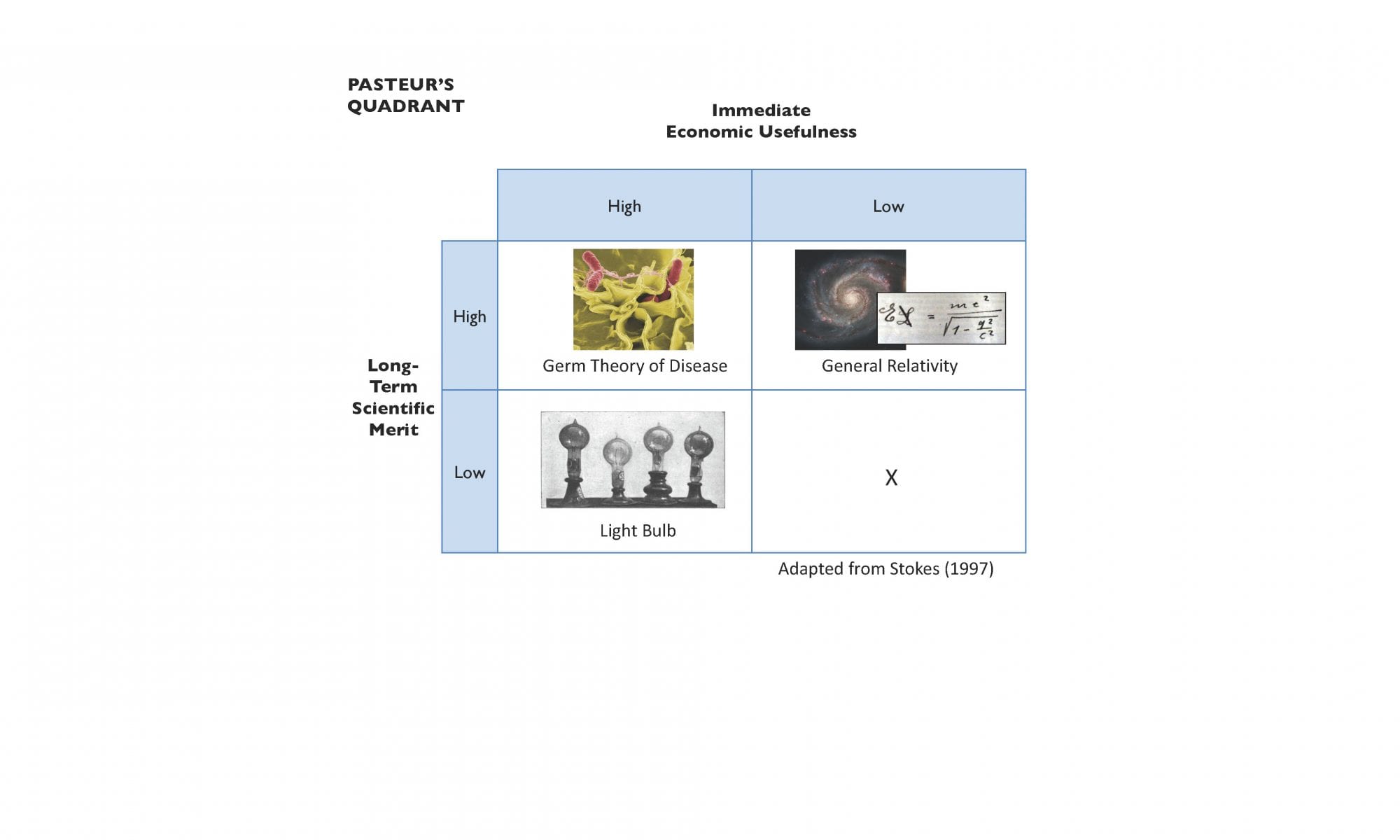| Publications: | |
| Aghion, Philippe, Mathias Dewatripont, Julian Kolev, Fiona Murray, and Scott Stern. 2010. “The Public and Private Sectors in the Process of Innovation: Theory and Evidence from the Mouse Genetics Revolution.” American Economic Review, 100(2): 153–58. | |
| Murray, Fiona, and Julian Kolev. 2015. “An Entrepreneur’s Guide to the University,” in Albert N. Link, Donald S. Siegel, & Mike Wright (Eds.), The Chicago Handbook of Technology Transfer and Academic Entrepreneurship. (pp. 97-137). University of Chicago Press. | |
| Murray, Fiona, Philippe Aghion, Mathias Dewatripont, Julian Kolev, and Scott Stern. 2016. “Of Mice and Academics: Examining the Effect of Openness on Innovation.” American Economic Journal: Economic Policy, 8(1): 212-52. | |
| Research in Progress: | |
| “Funding, Innovation, and Firm Formation: How Entrepreneurs Respond to Investment Booms”
Sole-Authored R&R at Strategic Management Journal |
|
| This paper examines how the local funding environment impacts entrepreneurs’ entry decisions and innovative output. I analyze patent filings of a panel of potential entrepreneurs: life-science inventors linked to top US universities. Using venture-backed IPOs in the same location but different industries, I find the causal impact of greater funding to be a 10-15% increase in inventor transitions from academia to the private sector, associated with a 70% increase in post-transition patenting. Greater funding also leads to a 19% reduction in patent citations, reflecting lower scientific value, as well as reductions in the scope of innovation and the time horizon of its impact. These findings highlight the critical role of funding availability in driving the tradeoff between short-term payoffs and long-term value in innovative industries. | |
| “Strategic Corporate Layoffs”
with Ruchir Agarwal Working Paper Version: http://www.imf.org/external/pubs/cat/longres.aspx?sk=44504 |
|
| Firms in the S&P 500 often announce layoffs within days of one another, despite the fact that the average S&P 500 constituent announces layoffs once every 5 years. This paper provides evidence that such clustering behavior is largely due to the reputational concerns of CEOs and top managers, particularly in relation to financial markets. We identify a subsample of firms that engage in layoffs immediately following the layoff announcements of large firms (“followers”), and compare them to firms that announce layoffs without such clustering. We find that followers have younger CEOs, less coverage by stock analysts, and use more market-based executive compensation. In addition, we find that the firms that cluster layoff announcements at daily frequencies are also the ones that are more likely to engage in mass layoffs during recessions. These effects are not driven by leverage, lifecycle differences, or other observable criteria. Our findings suggest that reputation management is an important driver of layoff policies both at daily frequencies and over the business cycle, and can have significant macroeconomic consequences. | |
| “Rethinking Peer Review: Evidence from the Gates Foundation Grant Process”
with Pierre Azoulay, Yuly Fuentes-Medel, and Fiona Murray Preparing for Submission to Management Science |
|
| One third of all R&D expenditures in the U.S. are funded by government agencies and non-profit institutions, with the bulk of this funding distributed through systems of peer-reviewed competitive grants. The dominant model of peer review makes funding decisions by consensus, using groups of experts in a particular field. However, this approach has been criticized on the grounds that it screens out highly novel projects and projects from unconventional sources. To address these concerns, the Bill and Melinda Gates Foundation’s Global Challenges Exploration (GCE) Program replaces the traditional model of peer review with individual decision-making by diverse sets of reviewers. We evaluate this alternative institution for the funding of scientific research using the first four rounds of the GCE Program, dating from 2008 to 2010 and comprising 7,881 applications and 27,856 application-reviewer pairs. We examine the role of diversity along the dimensions of gender, nationality, institutional background, and field of expertise. Despite an anonymous application process, reviewer decisions strongly favor applicants that are male, work in the U.S., and have an academic affiliation. We also find that having a common field of expertise with the reviewer is a strong predictor of a positive review. We then examine project outcomes through applicants’ scholarly publications and NIH grants received: we find that funding has a positive effect on both the quantity and quality of publications, and that reviewers tend to make better decisions when their area of expertise matches the proposal’s topic. Finally, we find that differences in measured outcomes do not fully explain the preference for traditional applicants and for projects in a reviewer’s field of expertise, suggesting that there is significant room for improvement in the peer review process. | |
| “To Price or Not to Price? The Rise of Convertible-Note Startup Finance”
with Evan Schwartz Preparing for Submission to Strategic Entrepreneurship Journal |
|
| This paper examines the capped convertible note as a form of early-stage startup financing and compares it to the well-studied instruments of preferred equity and debt. Applying mathematical modeling and numerical simulation, we characterize the contract terms and payoffs for each of these instruments. We demonstrate that convertible notes, which are defined by cap and discount parameters, comprise a flexible spectrum of securities with payoff characteristics that generally fall between those of preferred equity and debt. We then assess the primary trade-offs that investors and entrepreneurs consider in selecting an early-stage financing structure. Convertible notes offer important benefits relative to other instruments. Principally, they provide investors a payoff profile that is more robust to errors in forecasting the distribution of the startup’s future firm value. This facilitates agreement on financing terms, particularly early in a firm’s life when value is least certain. Further, convertible notes create less overhang in future financing rounds than debt. Weighing against these benefits, convertible notes reduce investor incentives to increase pre-conversion firm value in comparison to preferred equity and have the potential to introduce conflict between the risk preferences of investors and those of entrepreneurs.
|
|
| “Taxing Innovation: The Impact of Tax Policy on Entrepreneurship (Working Title)”
with Philippe Aghion Target Journals: American Economic Review or Journal of Political Economy |
|
| Status: This paper looks at the impact of tax policy on entrepreneurship and innovation, taking advantage of state-level variation to track entrepreneurial ventures and patent creation from 1975 through 2005. The paper is currently in the analysis stage, and aims to identify the specific elements of tax policy which have the greatest impact on key outcomes such as patent quantity and quality, the founding of entrepreneurial ventures, and the migration of inventors across state lines. This paper is currently in the analysis stage, having completed preliminary data collection.
|
|
| “Patents and Jobs (Working Title)”
with Ruchir Agarwal Target Journal: Strategic Management Journal |
|
| Status: This is an early-stage project, looking at the relationship between corporate innovation and labor market outcomes. Specifically, we seek to differentiate between product innovation (i.e. the creation of new markets) and process innovation (i.e. increasing efficiency), and to highlight how these different types of innovation impact both employment and wages. In addition to calculating own-firm effects, we also estimate intra-industry spillovers. The paper is currently in the data collection stage. | |
| “Innovation Teams: Explaining Patent Output in Academia and Industry (Working Title)”
Target Journal: Academy of Management Journal |
|
| Status: This is an early-stage project, looking at the productivity of inventors who work together on multiple patent filings. We explore the determinants of both the quantity and quality of patent output, and analyze the different productivity patters between academic and industry innovation. The paper is currently in the data collection stage. | |

